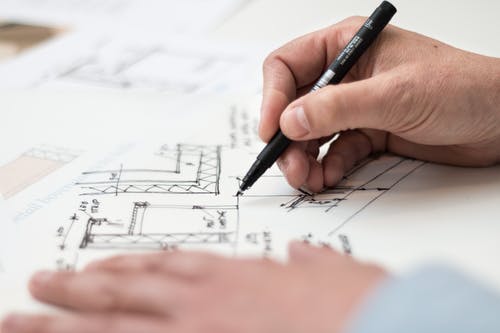TYPES OF ARCHITECTS
Architects are trusted advisors, qualified to design and suggest
- What and How to build. Architect design places which people needs to live,
work, worship, eat, learn, play, shop, meet, and govern. Some Architect
specializes in the designing of one type of building and others focus on
planning and predesign services or construction management.
Architecture is a very important career path that many choose to walk. It is a challenging career that can become very lucurative once you have built up a reputation. You should know that there are many different types of architects.
1. Residential Architect
Residential architecture is all designing and building home
ranging from single family home to apartment complexes. Residential architect
design homes and are in directly dealing with clients. The architect deals in
designing of the home, drawing out plans; estimation and supervision of the
work carried out at site, and keeping in mind the prevailing building codes and
safety issues. Many architects are passionate about designing stunning homes,
which are customized to client likings.
2. Commercial Architect
Commercial architects design buildings which are used for
commercial purposes like:
Hotels
Office buildings
Malls/ shopping complex
Museums
Government Buildings
These buildings are designed for large number of different
type of people. The designed building should not only be eyeing catchy but also
be designed with functionality and efficiency of the structure. Commercial
projects require bigger team of architects and consultants as the nature of
project is large. A commercial architect should have full understanding of commercial
building codes, safety regulations and financials involved in construction.
3. Industrial Architect
As name suggest, the Architect who experts in designing an
industry or factory are called industrial architect. The buildings typically
designed are:
Warehouses
Factories
Storage building
Production
Processing plants
Power plant
Transport hubs
Terminals
This type of building requires space designing to be
functional and streamline the operations of business while providing an extra
space for its users. Industrial architect are usually in high demand.
4. Landscape Architect
Landscape
architects are those architects who are expert in Horticulture; because they
are the one who suggests types of trees, plants, flowers, and other greenery
should be placed in specific spaces. They are decisions is based on climate,
location and type of greenery which will last long in the given environment. The
design and development of outdoor spaces such as private and public gardens,
lawns, parks, squares, orchards, and building walkways, Sometimes interior
spaces like courtyards are also been designed and catered by Landscaped
architect. They are also involved in designing of residential, commercial,
institutional projects other recreational spaces.
5. Conservation Architect
Conservation (Restoration) Architects have
Knowledge about history of architecture which helps them in preserving,
repairing and maintaining ancient monuments and structures to prevent it from
deterioration. They understand the historical knowledge, architecture and
significance of the building which they restore and propose the most efficient
methods to conserve and protect it through research, documentation, examination
and treatment.
6. Green Architect
Sustainable architects possess an expertise in creating environmental-friendly and energy efficient builds. They are knowledgeable in the best sustainable products and green building methods to utilize in order to meet necessary standards. These architects must be proficient when it comes to using innovative construction features and must be imaginative in finding ways to integrate these innovations into a functional and visually appealing space. They also work closely with the construction industry supply chain to ensure that local skilled and unskilled labor resources and locally produced materials and components are used wherever possible for the building.
7. Interior Architect
Interior design architects are just as important as the
architects that design entire buildings. Some architects proceed in this
direction to have complete control of their project from constructing their
building to designing its interiors with the same vision. Sometimes clients looks
an interior design specialist to get there building interiors done. Architects
have the important job of ensuring that the interior elements of a building
look as good as possible. Interior Architects invest their knowledge in
detailing and designing the interiors of a structure.
8. Urban Designer
Architects
who specialize in urban design are involved in city planning and are focused on
the design of an area as a whole, rather than of individual buildings. . They treat the community as their client and
must consider political, cultural, demographic and cultural aspects while
designing and solving problems in a dynamic environment. Whether they are working on improving an
existing city or a completely new district, urban designers decide where
certain building facilities required by the community should be located. In
simple terms, they decide where the residential houses, commercial shops,
public utility buildings, street networks, bridges, and other infrastructures
will be built within a city or town.
9. Municipal/ City Architect
Every City has different rules and building byelaws. The role
of a Municipal Architect varies depending on the city’s local authority. Their
primary role is to review and approve design works, formulate guidelines as per
local building codes and plans for buildings of the city. Prepare estimates and
costing, oversee the site and building evaluation and provide technical
assistance to the government and the city development authorities.
10. Institutional Architect
Institutional Architect refers to the architect who deals in education,
healthcare, recreation, or public works buildings such as Schools, Colleges,
Universities, Hospitals, Museum, Exhibition halls. Institutional construction
encompasses buildings that in the community.
Because
every institutional building is unique, there is no true “one size fits all”
approach to institutional building. Architects consider elements such as design,
functionality, services, practicality, natural ventilation, community access to
the site, building aesthetics, adherence to local regulations, safety and fire
protection.













Comments
Post a Comment